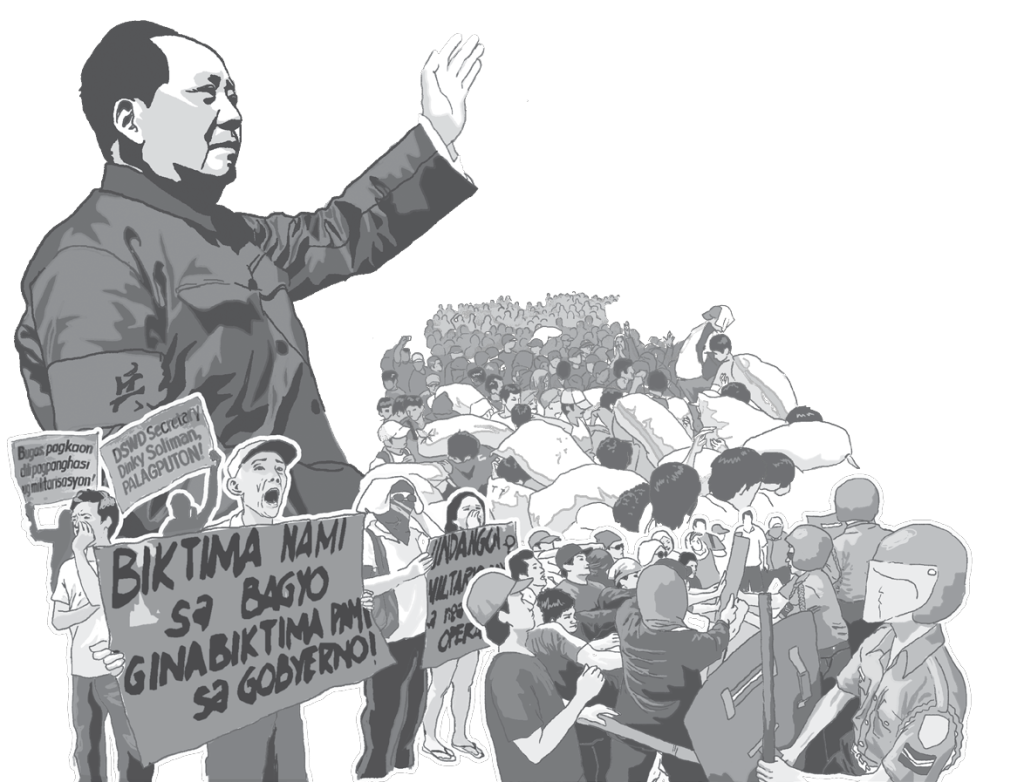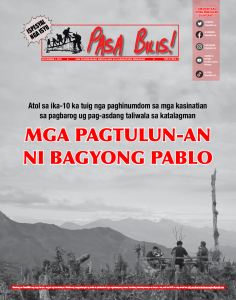Hunan, Typhoon Pablo and the militant peasant movement

Eighty-five years span the period between Comrade Mao Zedong’s investigation of the peasant movement in Hunan in March 1927 and the historical militant peasant movement in the wake of Typhoon Pablo’s onslaught in Southern Mindanao in December 2012.
In this series of articles, we looked back on the achievements of the peasants of Hunan and the difficulties they encountered in the face of criticisms hurled against their associations. We close the series by relating the experiences of the peasants venerated by Mao to the experiences of Typhoon Pablo victims that inspired other calamity victims across the country.
Pay attention to the well-being of the masses
In the succeeding months after Typhoon Pablo, the masses in the region showed us that instead of being overwhelmed by their misery, it was more correct to undertake militant peasant movement not only in overcoming the calamity but also in advancing the people’s war.
How did we accomplish this?
Like the peasant associations of Hunan, we sharply identified the land issue as key in order to mobilize thousands of calamity victims for the revolution. We succinctly raised the problem of worsening poverty as a result of the calamity to the basic problem of feudalism.
We effectively held the revolutionary mass line in launching painstaking social investigation, organizing poor peasants and mobilizing them in their biggest number in various forms and methods. In our experience, just as Mao discovered for himself in Hunan, the revolutionary organizations of the poor peasants became key in realizing great achievements.
Counterrevolutionary theory
The peasants’ rejection of the trite “victim mentality” and merely begging for relief goods manifested their militant spirit hitherto unseen by the ruling class in the region in the face of a natural calamity. Like what happened in Hunan, the peasants in the region “disturbed the gentry’s sweet dreams.”
“Thieves! Plunderers!” These were the accusations thrown against the victims of Typhoon Pablo when they confiscated the hundreds of sacks of rice and other relief goods that were stacked in the regional offices of the Department of Social Welfare and Development in Davao City.
After the reactionary government refused to deliver on its promises on several occasions, the victims successfully raided the DSWD warehouse despite the threats posed by armed policemen. Like the Hunan peasants, the victims of Typhoon Pablo manifested the “terrible or excessive” strength of the united oppressed masses.
Who was more “terrorized” by said deluge of the peasants? It was the reactionary bureaucrats like former DSWD Sec. Dinky Soliman and [then] Davao City Mayor Sara Duterte and the fascist armed forces of the ruling class like Bato dela Rosa, who at the time was the chief of the Davao City police.
In his criticism of those who denounced the actions of the Hunan peasants as “excessive,” Mao showed that said view was evidently a means to dampen the strength of the peasants in order to advance the interests of the landlords and preserve the old feudal order and impede the establishment of the new democratic system.
“This is clearly a counter-revolutionary theory,” judged Mao.
Political power
The most potent lesson of the similar experiences of the Hunan peasants in 1927 and the peasant calamity victims in our region in 2012 and the succeeding years is the widespread creation of organs of political power as a result of the militant peasant movement.
The peasant movement in Hunan struggled against the political authority of the ruling class and its feudal-bourgeois culture. From smashing the political and economic power of the landlords to resisting male and clan authority, the peasant organizations struggled in order to shatter the old exploitative society and establish new democracy rooted in the interests and welfare of the oppressed.
On the other hand, the peasant movement in the region did not cease in merely taking the reactionary government to task for its criminal negligence in the midst of calamity. The masses advanced their unity and collective action further: they established the people’s democratic government.
Tens of thousands of peasants and Lumad comprised many revolutionary committees in the barrio and municipal levels while revolutionary mass organizations increased hundred-fold. In almost all and on every level of these organs of power and organizations, women and the youth held active leadership roles.
Hundreds of hectares of land were opened for communal farms in order to achieve self-sufficiency. Programs for education, health and culture were widely carried out. Most of all, hundreds joined the Red army in order to defend the achievements of the masses.
In the sphere of class struggle
The intensification of peasant mass movement in the path of agrarian revolution remains to be one of the immediate challenges to all revolutionaries in the region. The rich experiences during Typhoon Pablo and the peasant movement that spawned during this period show our grasp of initiative in bringing every objective condition that emerges to the sphere of class struggle.
Only in launching militant mass movement, in all types and forms, in every conceivable issue, in any circumstance, can the oppressed class witness the fascist and rottenness of the semifeudal and semicolonial system and the aptness of advancing the people’s war.
As we face the new decade, it is imperative that we ignite the revolutionary tradition and militant peasant movement that Comrade Mao witnessed in 1927 Hunan and which jolted our region in 2012 and the supervening years.
___
First published in Pasa Bilis! October 2021 issue
(Pasa Bilis! Special Issue, December 4, 2022)



